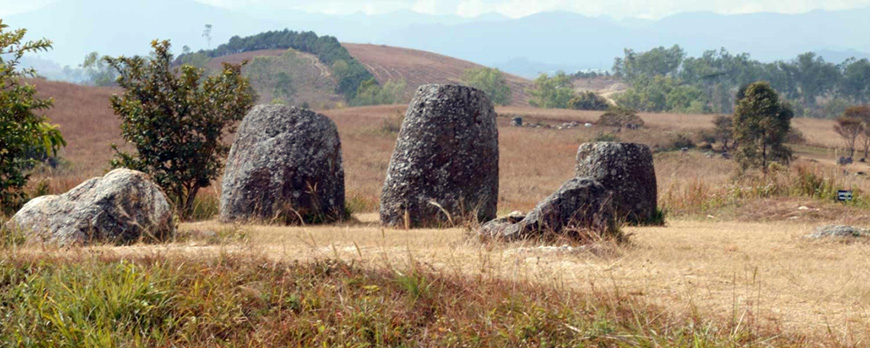Introduction
The Plain of Jars, located in the Xieng Khuang province of Laos, is a fascinating archaeological site that has puzzled researchers for decades. This vast plain is scattered with thousands of mysterious stone jars, ranging in size from small to colossal. The exact purpose of these jars remains a mystery, but they are believed to be ancient burial sites.

The Plain of Jars, a fascinating archaeological site - Source : Tourism Laos
A Fascinating Historical Site
The
Plain of Jars is believed to date back to the Iron Age, around 2,000 years ago. The jars are thought to be associated with the Funan Kingdom, a powerful ancient empire that once ruled over parts of Southeast Asia. Some scholars believe that the jars were used as burial containers for the elite members of society.
The Enigma of the Jars
The jars are made of sandstone and vary in size from a few meters to several meters in height. Some of the jars are decorated with intricate carvings, while others are plain. The origin of these jars is unknown, but it is believed that they were created by the prehistoric inhabitants of the region.
Exploring the Plain
The
Plain of Jars is divided into several clusters, each with its own unique features. Visitors can hike through the plain and explore the various clusters, marveling at the size and number of the jars. Some of the jars are located in remote areas, requiring a trek through the jungle to reach them.
Practical Information
Best Time to Visit
The best time to visit the Plain of Jars is during the dry season, from November to April.
How to Get There
The Plain of Jars is located about 200 kilometers from Vientiane. The most convenient way to get there is by car or bus.
Entrance Fee
There is a small entrance fee to visit the Plain of Jars.
Accommodation: There are several guesthouses and hotels in the nearby town of Phonsavan.
Conclusion
The
Plain of Jars is a fascinating and mysterious place that offers a glimpse into the ancient history of Laos. Exploring this site is a unique and unforgettable experience.